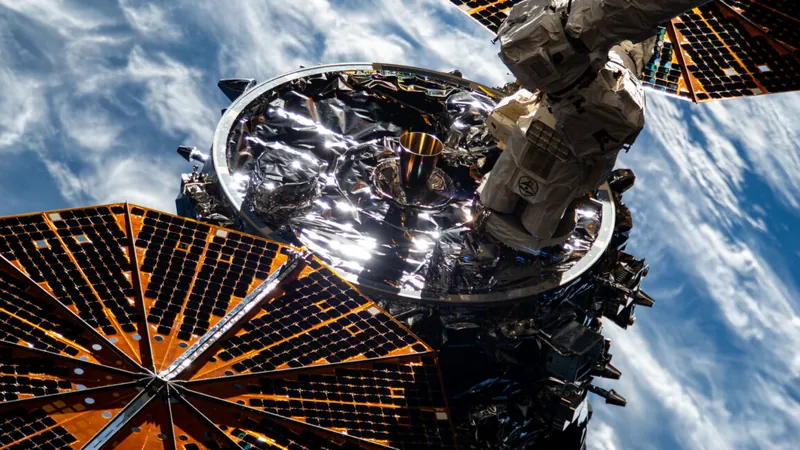
Critical Supplies Delayed: Northrop Grumman's Cygnus XL Faces Engine Trouble on Route to ISS
2025-09-16
Author: Olivia
In a surprising turn of events, Northrop Grumman's latest cargo mission to the International Space Station (ISS) has hit a snag. The Cygnus XL spacecraft, which was primed to deliver a staggering 11,000 pounds of vital supplies and experiments, will not arrive as originally planned due to an unexpected main engine malfunction.
NASA confirmed on Tuesday afternoon that ground teams are scrambling to assess backup options for the Cygnus mission. An early morning issue caused the spacecraft's main engine to shut down prematurely during critical burn maneuvers, designed to elevate its orbit for the upcoming rendezvous with the ISS.
Launch and Mission Goals
The Cygnus XL was launched on Sunday evening from Cape Canaveral Space Force Station aboard a SpaceX Falcon 9 rocket. It was slated to dock with the ISS early Wednesday through a series of precise engine burns. Unlike SpaceX's automated Cargo Dragon, the Cygnus requires human intervention via a robotic arm, which NASA astronaut Jonny Kim was set to operate for capturing the spacecraft.
As Northrop Grumman's 22nd cargo delivery under a multi-billion-dollar NASA contract, this mission is particularly crucial. A previous spacecraft was damaged during shipping, making this delivery even more important for maintaining the ISS's operations.
The Larger Cygnus XL
This flight marks the debut of the new Cygnus XL model, designed to carry 33% more cargo than its predecessor. As a result, it boasts the largest payload ever sent to the ISS by a commercial vehicle, featuring fresh food, critical hardware for scientific experiments, and essential spare parts.
Exploring Alternatives
The engine uses a hypergolic mixture of hydrazine and nitrogen tetroxide, known for its reliability. However, if the main engine is deemed inoperable, the mission team is considering a backup plan that involves the spacecraft's smaller reaction control thrusters, which could facilitate a more gradual orbital adjustment.
Potential Consequences
Unfortunately, the Cygnus spacecraft is not designed for a safe return to Earth. It is filled with trash and burned up in the atmosphere after its mission ends. Consequently, if the spacecraft fails to reach the ISS, it would mean the total loss of its precious cargo.
As teams work tirelessly to address this engineering challenge, the fate of crucial supplies for the astronauts aboard the ISS hangs in the balance, showcasing the unpredictable nature of space missions.









 Brasil (PT)
Brasil (PT)
 Canada (EN)
Canada (EN)
 Chile (ES)
Chile (ES)
 Česko (CS)
Česko (CS)
 대한민국 (KO)
대한민국 (KO)
 España (ES)
España (ES)
 France (FR)
France (FR)
 Hong Kong (EN)
Hong Kong (EN)
 Italia (IT)
Italia (IT)
 日本 (JA)
日本 (JA)
 Magyarország (HU)
Magyarország (HU)
 Norge (NO)
Norge (NO)
 Polska (PL)
Polska (PL)
 Schweiz (DE)
Schweiz (DE)
 Singapore (EN)
Singapore (EN)
 Sverige (SV)
Sverige (SV)
 Suomi (FI)
Suomi (FI)
 Türkiye (TR)
Türkiye (TR)
 الإمارات العربية المتحدة (AR)
الإمارات العربية المتحدة (AR)